 |
| Corps volunteers received nuclear, biological, and chemical training and were issued protective clothing at MEAPO |
The Role of Army Engineers during Operations Desert Shield and Desert Storm
The U.S. Army Corps of Engineers contributed significantly to the U.S.-led victory in the 1990-91 Persian Gulf War. The Corps rapidly deployed its equipment, effectively used contractors to perform engineering functions, reached out to obtain support from other nations, and quickly dispatched its personnel to the Persian Gulf to oversee much of the process. Although under a pre-existing arrangement the Corps’s Middle East/Africa Projects Office (MEAPO) (now the Transatlantic Programs Center) had been designated as the Department of Defense contract construction agent throughout the region, the Corps basically accomplished these feats without significant prior positioning or planning.
Following the Iraqi invasion of Kuwait on August 2, 1990, the Corps joined in the rapid and large-scale response by the U.S. military. Then Chief of Engineers Lieutenant General Henry J. Hatch urged the U.S. Army component of the U.S. Central Command to add Engineer officers to its staff. Within a matter of weeks the Corps sent an advance party to Saudi Arabia to plan the myriad of construction tasks to support the deployment of a large coalition force. Another issue overcome was the initial delay in dispatching combat engineer battalions to the theatre of operations. The delay, which had been caused by the priority given to maneuver forces, fortunately was short-lived, and combat engineer battalions soon deployed to the region.
The Corps managed to overcome the shortages of personnel, equipment, materiel, and funding, as well as the climatic challenges encountered in Southwest Asia. It soon increased its in-country team by sending civilian volunteers recruited from inside the agency. While the Corps did deploy 160 civilian personnel as part of its mission tasking, women were not sent to Saudi Arabia during the initial phase due to the lack of separate facilities and the dictates of Saudi culture. Corps civilian personnel, who came to constitute more than 90 percent of the construction management and real estate capability for the American military presence in the Gulf, received extensive training and equipping prior to deployment.
The Corps also used the Gulf Peace Fund as a more effective way to channel funding from other nations quickly. The regional contingency construction team, first activated by the Corps in August, eventually oversaw a construction program valued at almost $1 billion. Given the immense size of the task, civilian contractors already living and working in the region critically supplemented troop construction due to their experience with local customs and conditions.
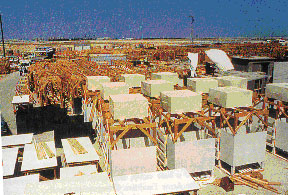 |
|
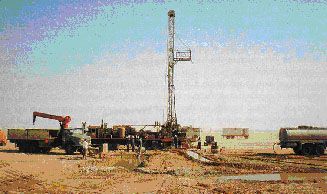 |
| Contractors assemble latrine, shower, and washstand units for U.S. soldiers |
|
A contractor drills for water in the Saudi Arabian desert |
During the buildup prior to the outbreak of hostilities, the Corps provided housing, sanitation facilities, and logistics support to a burgeoning number of U.S. troops arriving on an almost daily basis. In addition to administering defense contracts, the Corps also deployed the 535th Engineer Detachment (later relieved by the 249th Engineers) to ensure power transmission to Army headquarters, patriot missile batteries, and the 85th Evacuation Hospital. Corps laboratories developed new technologies for analyzing terrain, detecting mines, locating water, and controlling dust in order to help soldiers achieve victory. For its efforts, the Engineer Topographic Laboratories (now the U.S. Army Engineer Research and Development Center's Topographic Engineering Center) received special recognition as the Army's Research and Development Organization of the Year. Army Engineers requested that the Belvoir Research, Development and Engineering Center develop a new mine-clearing rake. The rake, which allowed for quick penetration of armored vehicles through Iraqi lines, became fully deployed to Saudi Arabia prior to the start of the ground campaign.
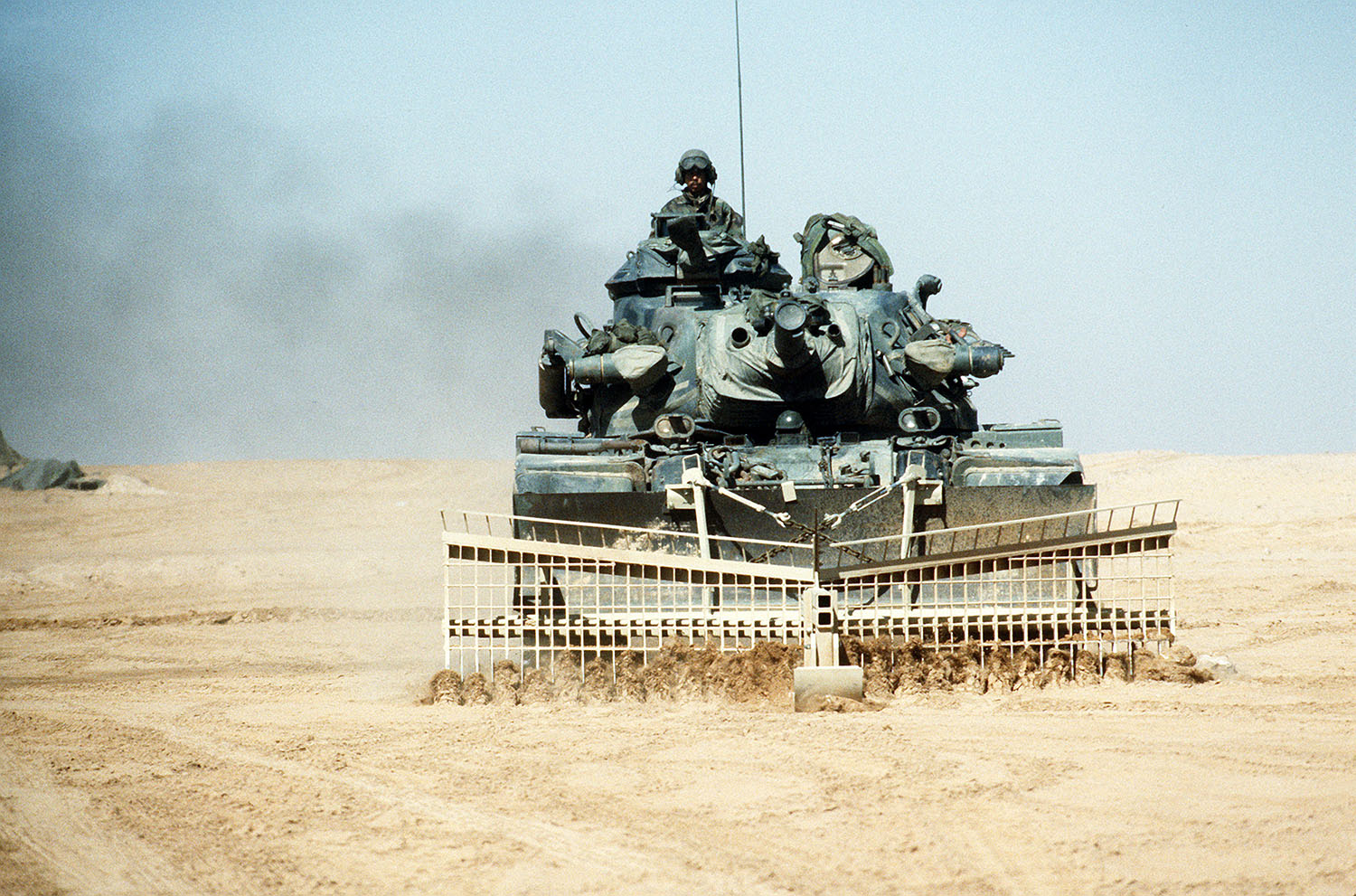 |
Members of the 72nd Engineering Company, 24th Infantry Division,
test a mine-clearing rake attached to an M-728 combat engineer
vehicle during Operation Desert Storm |
During Desert Shield, Engineer combat troops maintained supply routes and built roads and airstrips. In addition to their support of operations from the continental United States, topographic engineers also were deployed in forward positions. When ground fighting broke out on February 24, 1991, combat engineering elements involved in the campaign were tasked with locating and then breaking through Iraqi bunkers to rapidly demolish as much enemy equipment and munitions as possible. At the termination of Operation Desert Storm four days later, Corps personnel and engineer troops acted quickly to render humanitarian assistance to the liberated Kuwaiti populace.
In support of Operations Desert Shield and Desert Storm, the Corps ultimately supported just under $300 million of construction on base camps, airfields, wash racks, sunshades, and equipment rental. Indeed, simply to support the basic needs of the troops the Corps spent roughly $40 million on contracts and equipment primarily for latrines and washstands. It also executed almost $100 million in leasing contracts during the military operation. Of the total funds expended, the majority came from Saudi Arabia under host-nation support agreements, and a sizeable portion of the balance from the Gulf Peace Fund on behalf of the Japanese government. In spite of the trying conditions, the Corps successfully fulfilled its mission.
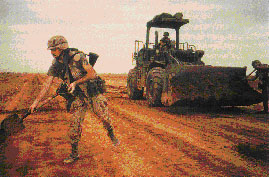 |
|
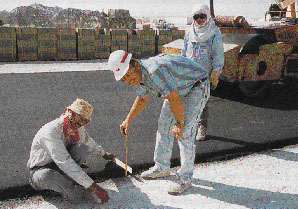 |
| Soldiers and equipment from the 20th Engineer Brigade work on a new roadbed |
|
A local contractor and Corps representative inspect the pavement thickness at the Camp Eagle II paving project, located near the King Fahd International Airport |
Photograph sources:
* * *
January 2002